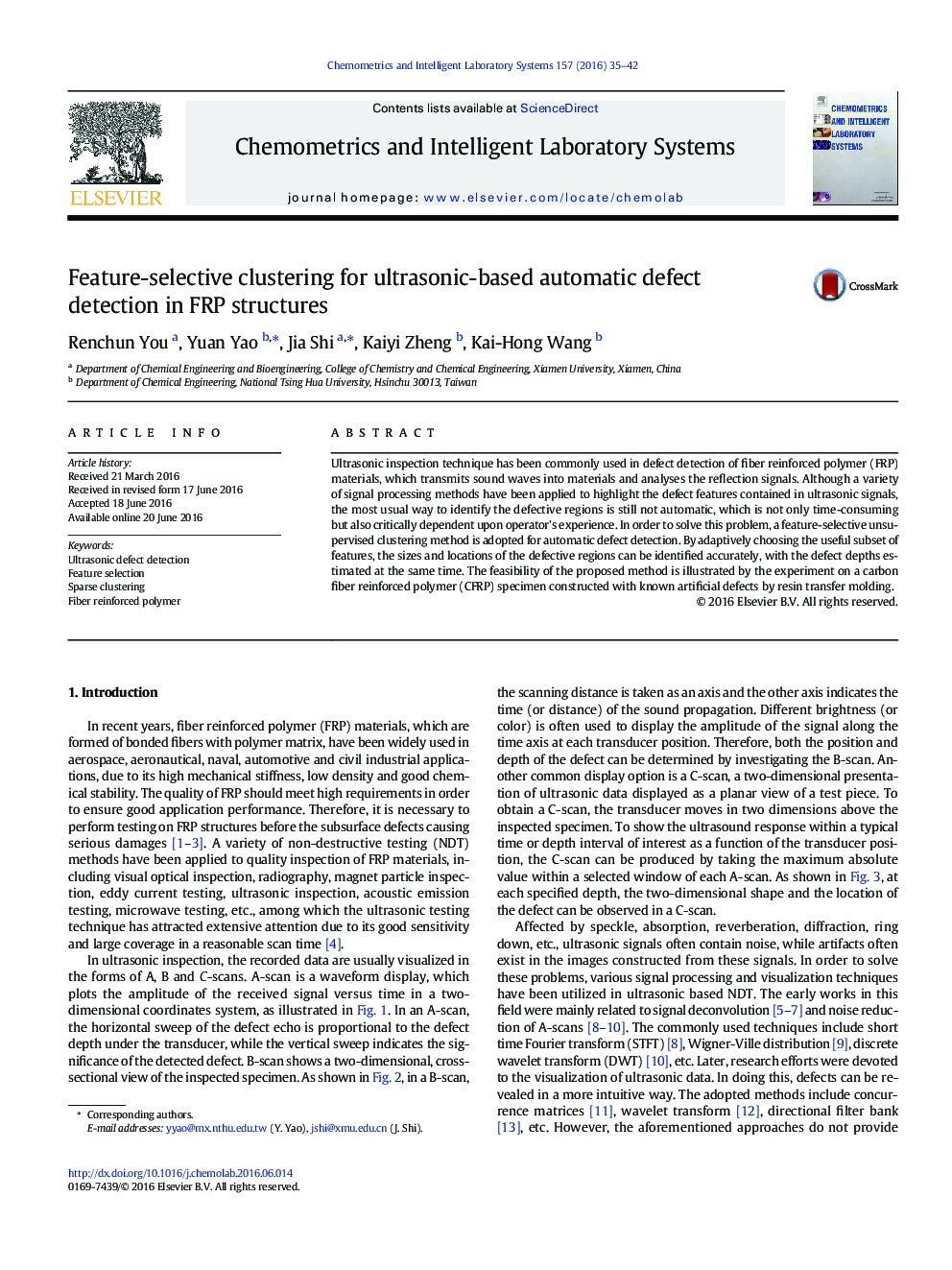| Article ID | Journal | Published Year | Pages | File Type |
|---|---|---|---|---|
| 1180126 | Chemometrics and Intelligent Laboratory Systems | 2016 | 8 Pages |
•Feature-selective clustering is utilized for ultrasonic data processing.•Effects of attenuation and surface echoes are removed by robust normalization.•Both the locations and depths of the defects can be identified automatically.•No historical defect data or expert experience is required.
Ultrasonic inspection technique has been commonly used in defect detection of fiber reinforced polymer (FRP) materials, which transmits sound waves into materials and analyses the reflection signals. Although a variety of signal processing methods have been applied to highlight the defect features contained in ultrasonic signals, the most usual way to identify the defective regions is still not automatic, which is not only time-consuming but also critically dependent upon operator's experience. In order to solve this problem, a feature-selective unsupervised clustering method is adopted for automatic defect detection. By adaptively choosing the useful subset of features, the sizes and locations of the defective regions can be identified accurately, with the defect depths estimated at the same time. The feasibility of the proposed method is illustrated by the experiment on a carbon fiber reinforced polymer (CFRP) specimen constructed with known artificial defects by resin transfer molding.
